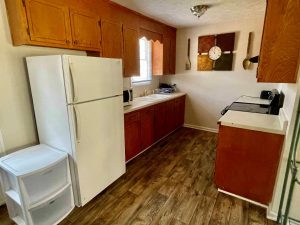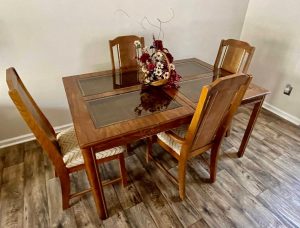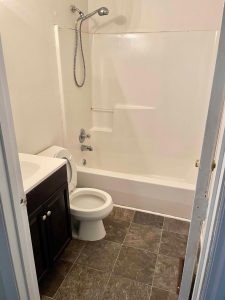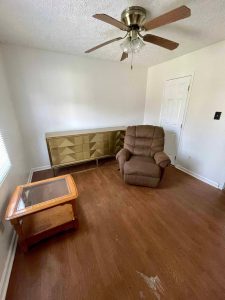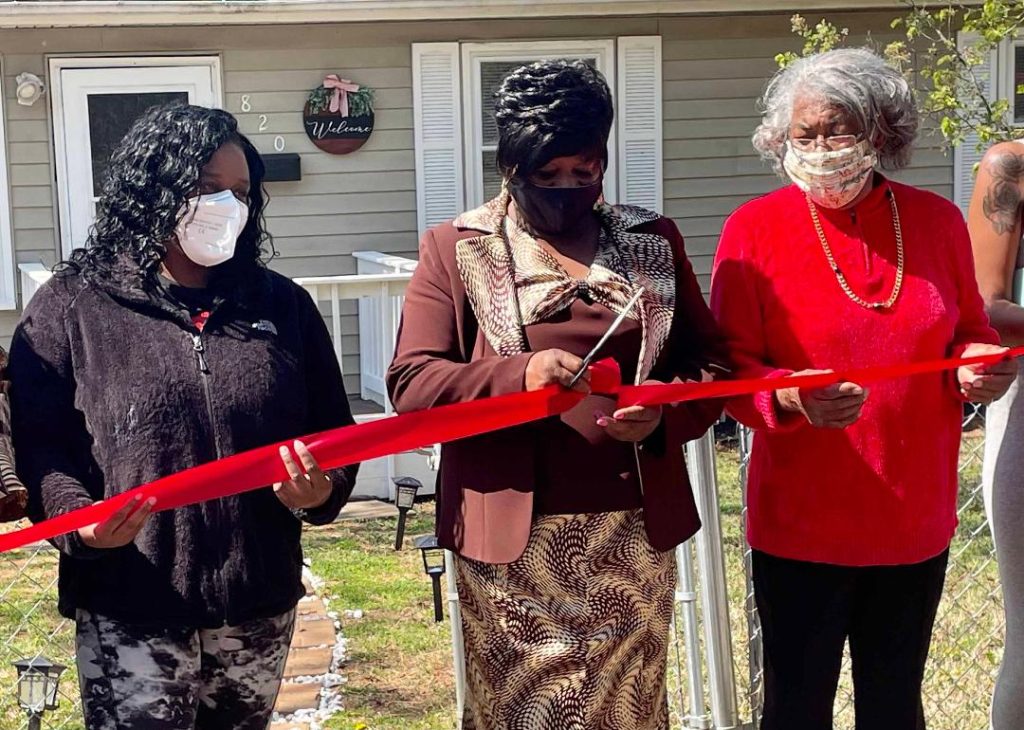
By Brandon Martin
A new group home for those seeking reentry into the community after the service of a jail sentence held a ribbon-cutting ceremony on April 7 at Forest Street Extension in Martinsville.
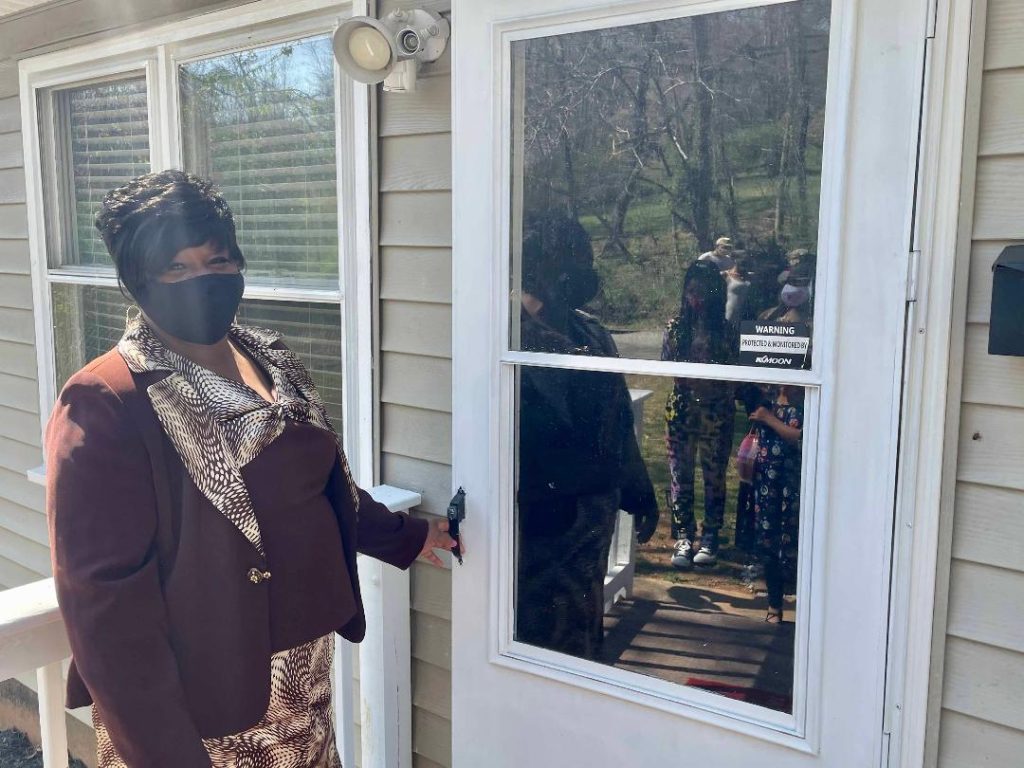
Creation of the home, named The Miracle Shelter, was spearheaded by Bassett native and local business owner Sandra Finney.
“Thirteen years ago, I had a vision,” she said. “I wanted the newly released inmates to be comfortable and have a place where they could feel like they could call home. It’s clean and there are no drugs around in the neighborhood. I think this is the perfect place for it.”
Finney put her heart into the project because she said that once a time, she needed the service.
“At one time, I was incarcerated, and I knew what it was like to be on drugs and in rehabilitation,” Finney said. “It’s been 30 years now with me being clean and sober.”
Upon her own re-entry, Finney began her other business Sandra’s Professional Cleaning Services, which provides cleaning services to local offices.
Owning her own business played a crucial role in recovery, Finney said.
“It was vital,” she said. “It was something that made me feel like the Lord was helping me accomplish that goal. I felt like life was just beginning. For somebody to have the background that I had, and to start my own business, it was really unexplainable and I’m in such awe of the accomplishments I’ve had so far.”
“It’s been a great business to help me get another business. It has been one of my dream jobs as well. That started 18 years ago and went really well,” Finney said. “I know how you feel when you are getting out of jail and not having anywhere to go. I think that is what really drove me into doing a rehabilitation home.”
According to Finney, the atmosphere of re-entry for previously incarcerated individuals is key. Just before the beginning of the pandemic last year, the Virginia Department of Corrections (VADOC) said Virginia had the lowest recidivism rate in the country for the fourth consecutive year. That year, the recidivism rate was 23.1 percent.

The department attributes the low rate to the effectiveness of re-entry services, educational programming, and treatment offered in VADOC facilities as well as effective supervision by VADOC probation and parole officers in the community post-release.
“Our success is the result of the collaborative efforts and incredibly hard work of our dedicated staff, community partners, and the returning citizens themselves,” said Harold Clarke, director of VDOC. “When incarcerated men and women successfully reintegrate into society, everyone benefits – the Commonwealth, our communities, and the families – especially the children – of those returning home.”
To start, Finney said she would like to attract an anchor tenant who has shown progress in recovery and re-entry into society.
“Hopefully, I can get a good guy to come in that’s been going through a good recovery,” Finney said. “He can kind of be overseer of the home. I don’t need to be going there every day behind a bunch of big strong men.”
Finney said only men would be allowed to stay at the home, with a three-person maximum. She said she expects her first client to move in within the month.
“This is sort of like the Piedmont Community Services center for people that get out of being incarcerated. It’s a place for them to go for a home plan,” she said. “People will be living in it as their residence.”
Finney said the shelter will be connected with parole services within the city and county, along with other community health-related services.
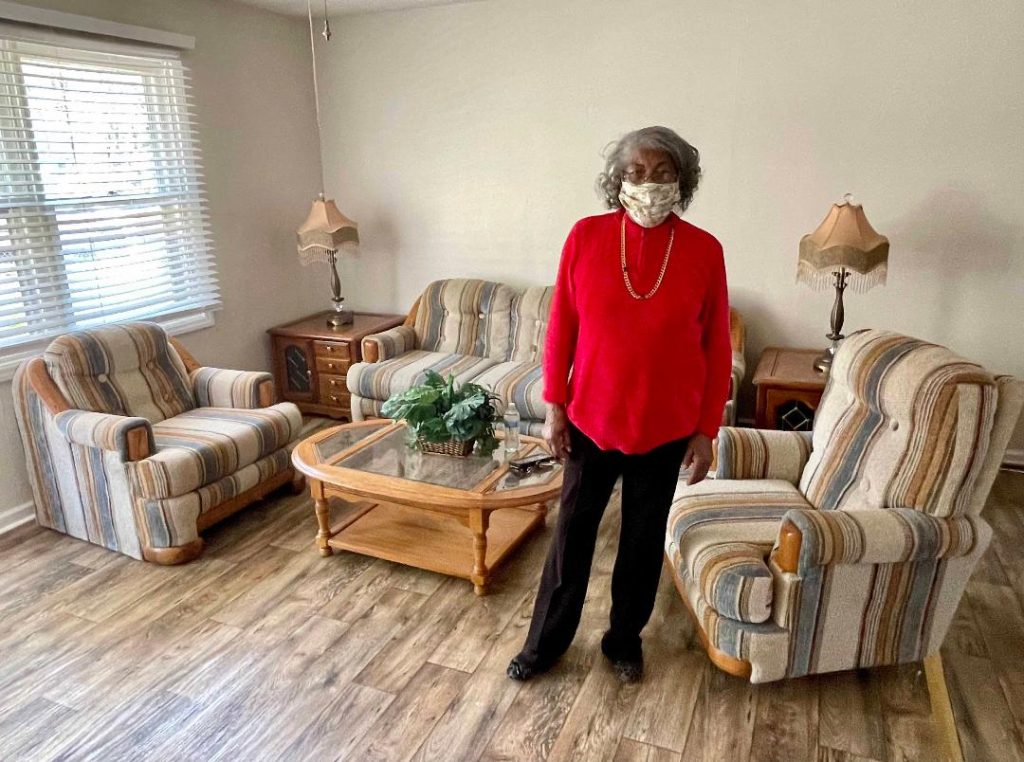
“We will be monitoring the outside to make sure there are no unauthorized entries,” she added.
On average, Finney said guests will be staying at the shelter approximately 90-days.
“If they need more time, then we can give them more time,” she said. “If they are working, they do need to pay a little something to learn how to work and be responsible. I want to make it where they can get a bank account to save up money and prepare them for the transition from the recovery home.”
Finney said the average monthly payment would be $200 to $250 a month, including all amenities and utilities.
“Nothing that is going to put them out there and make them feel like they can’t afford it,” she said.
The costs will help pay down some of Finney’s personal investment. Short of a complete revitalization of the property, Finney paid about $4,000 to replace the carpets, restructure the layout and a new paint job.
“The Community Storehouse helps with recovery homes,” she said. “They give donations of furniture and things of that nature. It’s been a job.”




